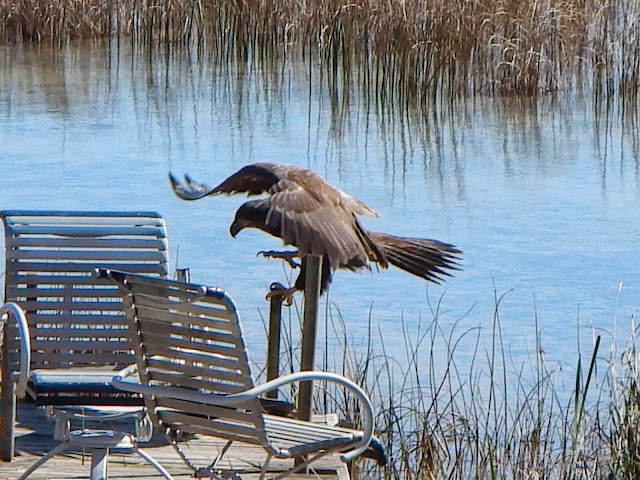 |
| Spectacular cloud formations and lighting over Hog Island, coupled with high winds and seas, made for an entertaining drive during a power outage Saturday morning, Oct. 26. |
Washington Island, Wisconsin -
Following is a short excerpt from the NOAA weather forecast for the Near Shore in our area earlier today (written Saturday, Oct. 26th):
FOR WATERS WITHIN FIVE NAUTICAL MILES OF SHORE ON LAKE MICHIGAN LMZ521-541-262215- THE BAY OF GREEN BAY SOUTH OF LINE FROM CEDAR RIVER MI TO ROCK ISLAND PASSAGE AND NORTH OF A LINE FROM OCONTO WI TO LITTLE STURGEON BAY WI- LAKE MICHIGAN FROM WASHINGTON ISLAND TO STURGEON BAY- 1152 AM CDT SAT OCT 26 2013 ...SMALL CRAFT ADVISORY IN EFFECT UNTIL 10 PM CDT THIS EVENING... .REST OF TODAY...NW WIND 15 TO 25 KTS WITH GUSTS TO AROUND 30 KTS. LOCALLY HIGHER GUSTS POSSIBLE NEAR DEATHS DOOR. WAVES 3 TO 6 FT. MOSTLY CLOUDY WITH A SLIGHT CHANCE OF SHOWERS OR SPRINKLES. .TONIGHT...NW WIND 15 TO 25 KTS WITH GUSTS TO AROUND 30 KTS IN THE EVENING…
 |
| Cloud formations layered over the lake on a calm Saturday, October 19. Peterson Bay is in the foreground. |
Lake freighters held in port or anchored behind land forms late Friday, in response to the evening's forecast for high winds and large waves (the off shore NOAA report predicted possible waves to 28 feet in the open lake.) Peak winds were brief, but enough to get lake swells rolling, and the Roen dredging crews were able to work through the day Saturday by locating their dredge in the harbor's northern portion of the channel, where better protection was offered.
The type of clouds seen this time of year are unique to fall, laden with moisture and updrafts. The puffy plumes over Lake Michigan and Green Bay, even on a calm day, can bring enjoyable viewing this time of year in this latitude. Looking out my window late Saturday afternoon, I was surprised to see sheets of ice pellets moving across the harbor in a wind-whipped squall. But such conditions were short-lived. I glanced away for a short time, then back again a few minutes later, and the icy screen had already lifted and winds had moderated.
The type of clouds seen this time of year are unique to fall, laden with moisture and updrafts. The puffy plumes over Lake Michigan and Green Bay, even on a calm day, can bring enjoyable viewing this time of year in this latitude. Looking out my window late Saturday afternoon, I was surprised to see sheets of ice pellets moving across the harbor in a wind-whipped squall. But such conditions were short-lived. I glanced away for a short time, then back again a few minutes later, and the icy screen had already lifted and winds had moderated.
 |
| Sand Dunes Park proved to be a good vantage point to observe "Hawaii Five-0" type combers as they ripped into the East Channel shallows, tops blown back by westerly winds - Sat. Oct. 26. |
We took advantage of a power outage Saturday morning to skip making breakfast and to drive around the island. Then, I recalled that the Danish Mill had a back-up generator, and so we stopped there first to buy bakery and coffee, making our leisurely wind-leaf-and-cloud drive all the more enjoyable. Not a single car was encountered on our entire drive around the east side, from the South Shore Drive to Hemlock Drive and then along Lake View Road. We had the morning - that time of morning, at least - to ourselves.
Within a few weeks leaves will be off the trees almost entirely and deer hunting season will begin. Thanksgiving and Christmas holidays quickly follow, and the build-up of colder days that precede real winter. Until then, the often spectacular clouds and sky provide us with a backdrop and lighting to energize the changing of the seasons on Washington Island.
- Dick Purinton






